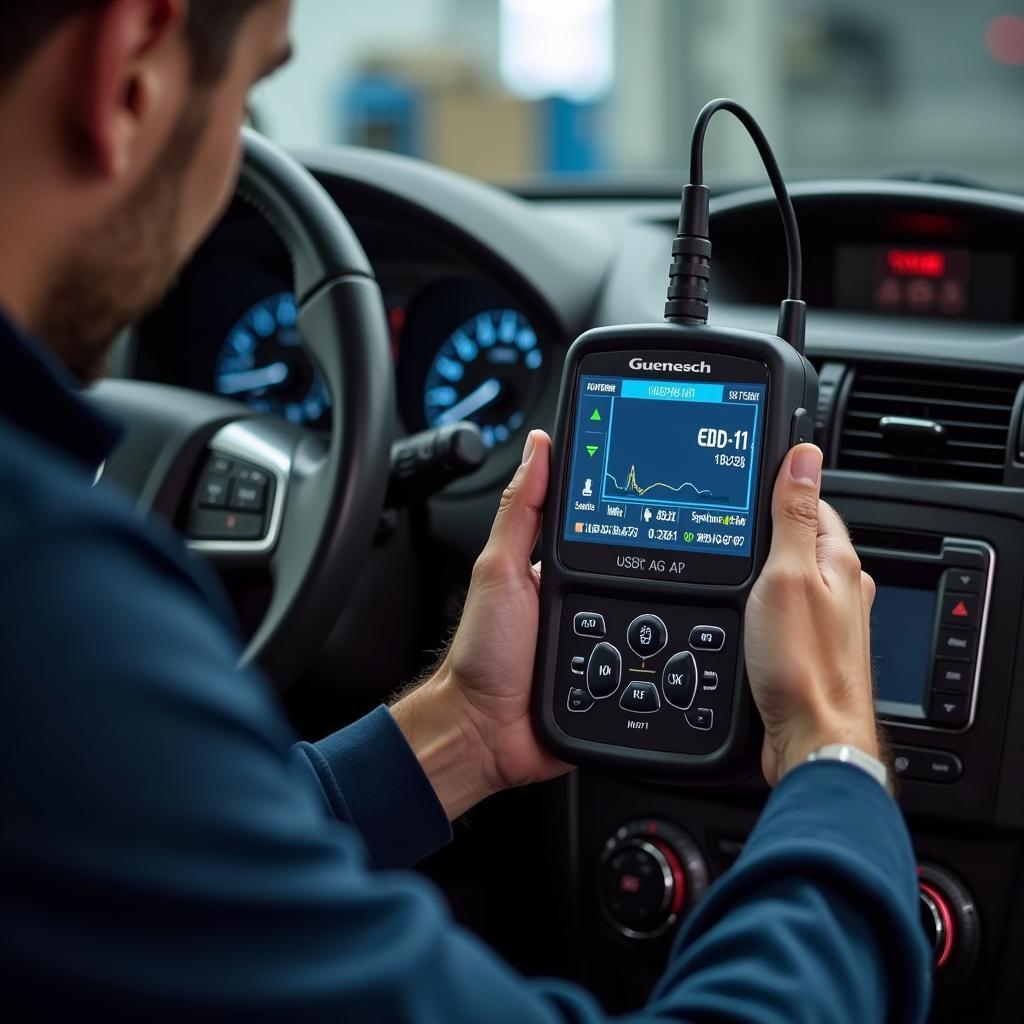Understanding your car’s dashboard warning lights is crucial for safe and efficient driving. Service Required Car Dashboard Symbols And Meanings can range from simple maintenance reminders to serious mechanical issues. This guide will help you decipher those cryptic icons and understand what actions you need to take.
Decoding Common Service Required Car Dashboard Symbols
Your car’s dashboard is a communication hub, constantly providing updates on your vehicle’s health. Many drivers are familiar with the check engine light, but there are a plethora of other service required car dashboard symbols and meanings that can illuminate, each with its own specific significance. Ignoring these warnings can lead to costly repairs, decreased fuel efficiency, and even dangerous driving situations.
What Does “Service Required” Mean?
The “service required” light itself isn’t tied to a specific fault. It’s more of a general reminder that your car is due for routine maintenance, such as an oil change, tire rotation, or other scheduled service based on mileage or time. However, it can sometimes be triggered by specific issues, so it’s always best to consult your owner’s manual or a qualified mechanic to determine the exact cause.
Understanding Specific Dashboard Warning Lights
While “service required” is a general alert, other dashboard symbols point to specific problems. Here’s a breakdown of some of the most common ones:
- Check Engine Light: This ubiquitous symbol can indicate anything from a loose gas cap to a serious engine problem. Get it checked immediately by a professional.
- Oil Pressure Warning Light: Low oil pressure can severely damage your engine. Stop driving immediately and check your oil level.
- Brake Warning Light: This can signal various issues, including low brake fluid, worn brake pads, or problems with the anti-lock braking system (ABS).
- Battery Warning Light: Indicates a problem with the charging system, which could be a failing alternator, a loose battery connection, or a bad battery.
- Coolant Temperature Warning Light: This warns of engine overheating. Pull over safely and let the engine cool down before checking the coolant level.
- Tire Pressure Monitoring System (TPMS) Light: This light comes on when one or more of your tires is significantly underinflated.
“Many drivers underestimate the importance of understanding their car’s dashboard symbols,” says certified automotive technician, Michael Stevenson. “These lights are your car’s way of telling you something’s not right, and ignoring them can lead to bigger problems down the road.”
Why is My Service Required Light On?
Several factors can trigger the service required light. The most common reason is simply that your car is due for routine maintenance based on the manufacturer’s recommended schedule. However, it can also indicate more specific issues, such as:
- Low fluids: This can include engine oil, coolant, brake fluid, power steering fluid, or transmission fluid.
- Worn brake pads: Your car may use sensors to detect when brake pads are nearing the end of their life.
- Malfunctioning sensors: A faulty sensor can trigger the service required light even if there’s no actual problem.
- Electrical issues: Problems with the car’s electrical system can also trigger this light.
“Don’t panic if your service required light comes on,” advises automotive expert, Sarah Chen. “It’s often a simple reminder for routine maintenance. However, if other warning lights appear or the light stays on after service, it’s essential to get a professional diagnosis.”
What to Do When Your Service Required Light Comes On
If your service required light illuminates, the first step is to consult your owner’s manual. It will often provide specific information about what the light means for your particular car model. If the manual doesn’t offer a clear explanation, or if other warning lights are also on, it’s time to take your car to a qualified mechanic for a diagnostic check.
 Mechanic Using Diagnostic Scan Tool on Car
Mechanic Using Diagnostic Scan Tool on Car
Preventing Future Service Required Lights
Staying on top of your car’s regular maintenance schedule is the best way to prevent the service required light from coming on unexpectedly. This includes regular oil changes, tire rotations, fluid checks, and other scheduled maintenance as recommended by your car’s manufacturer.
Conclusion
Understanding service required car dashboard symbols and meanings is crucial for maintaining your vehicle’s health and ensuring your safety on the road. By paying attention to these warnings and taking appropriate action, you can prevent costly repairs and enjoy a smooth, reliable driving experience.
FAQ
- What is the difference between “service required” and “check engine”? “Service required” is usually a maintenance reminder, while “check engine” indicates a potential problem.
- Can I reset the service required light myself? Yes, but it’s best to address the underlying reason it came on.
- How often should I get my car serviced? Consult your owner’s manual for recommended service intervals.
- Is it safe to drive with the service required light on? It depends on the underlying issue. If other warning lights are on, it’s best not to drive.
- What if the light comes back on after service? Return to the mechanic for further diagnosis.
- Can a faulty sensor trigger the service required light? Yes, a malfunctioning sensor can cause the light to come on even if there’s no real problem.
- How much does it cost to diagnose a service required light? Diagnostic fees vary depending on the mechanic.
Common Scenarios and Questions
- Scenario: Service required light comes on after an oil change. Question: Did the mechanic reset the light?
- Scenario: Service required light flashes intermittently. Question: Could this be an electrical issue?
Related Articles
- Understanding Your Car’s Warning Lights
- Car Maintenance Schedule: What You Need to Know
- How to Reset Your Service Required Light
Contact us via WhatsApp: +1(641)206-8880, Email: [email protected]. We have a 24/7 customer service team ready to assist you.
